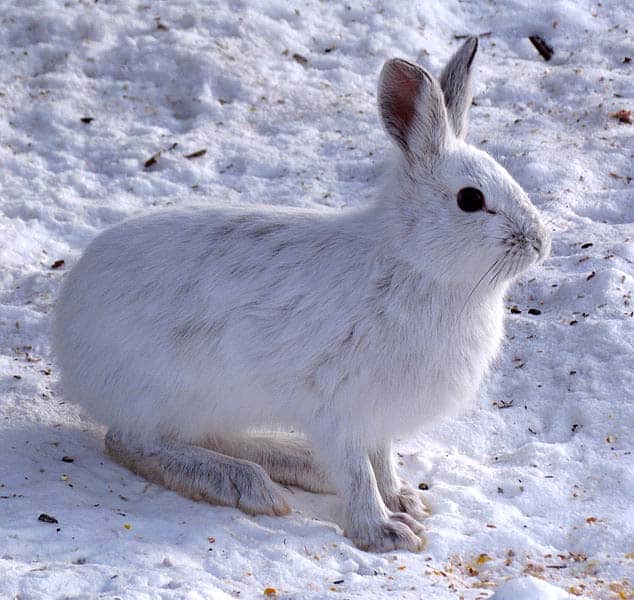It was a rare find this winter to come across snowshoe hare tracks. In years of abundance it is hard not to notice all the snowshoe hares darting across roads or into the willows. Their plethora of trails crisscrossing in an intricate maze throughout the woods peaked in their 10 year cycle just 5 years ago.
Snowshoe hares are members of the leporid family (rabbits and hares). In Alaska we have two species of hares, the Arctic hare and the one common to the Interior, the snowshoe or varying hare (Lepus americanus).
Hares are an important link in the food chain between plants and carnivorous animals. Populations of many predators such as lynx, owls, fox and martens fluctuate in a close relation to the hare’s cycle. When the hare population crashes, disease and the toxins plants produce to defend against overbrowsing appear to be the most important mortality factors. The inevitable crash occurs.
As our days lengthen with spring, the hare’s winter white pelage will soon be turning to a mottled grayish-brown and white, blending well with their changing environment. The breeding season started about mid-March and the first litters will be born in May. Young snowshoe hares are perfect miniatures of their parents. Fully furred and with eyes soon opened, the leverets are born in litters of usually four. Female hares breed again soon after a birth and may produce as many as four litters a year.
The newborn hares, huddling in a heap, their only defense against clouds of mosquitoes, will only spend about 10 minutes a day with the female when she comes back to nurse. The leverets will leave their simple grass-lined nests about a week after birth. By this time they will have doubled in their weight and will be eating greens. In another week or two, they will be weaned.

Hares belie their meek, silent appearance. They can drum with their huge hind feet, making a sound much like the springtime wing- drumming of ruffed grouse. A hare will aggressively defent his home range, which may encompass 10 acres, against other invading hares. They can growl and will kick with their powerful hind feet. Their pathways are delimited mainly by scent.
Like all leporids, the hares are crepuscular (active at twilight) and nocturnal. During daylight hours, they spend considerable time under sheltering bushes or stumps. As evening approaches, they follow familiar runways through their domain to feed. Their range is mostly covered by spruce, birch, willow and alder, and the young decidous underwood is important winter food.
When the days shorten in the fall, a hare’s pelage changes, starting with the tops of its huge hind feet turning white, followed next by its ears. As Autumn progresses, the white of the hare’s belly extends up its sides and a white patch appears on the back of its head and neck. By October the snowshoe will have turned completely white in accordance with the season.
In winter, deep snowfalls not only elevate the hare so that it can reach higher for its food, but the snow load also bends tender new growth of the tops of alder, birch and willow within range. As hares crouch against the cold of winter they draw their feet undeneath their bodies and tuck their ears back against their withers, fluffing out their fur for mazimum insulation. Like many northern dwellers who do not hibernate in winter, during the coldest periods they seek refuge in the snow’s insulation.
The hare’s keen sense of smell and spatial orientation enable it to reestablish its trail network after a deep snowfall. As the number of hares begins to naturally increase, next winter, when you take a walk on a clear night after a new snowfall, you may see the moonlit taiga come alive with the silent, darting white shapes of the snowshoe hare.



